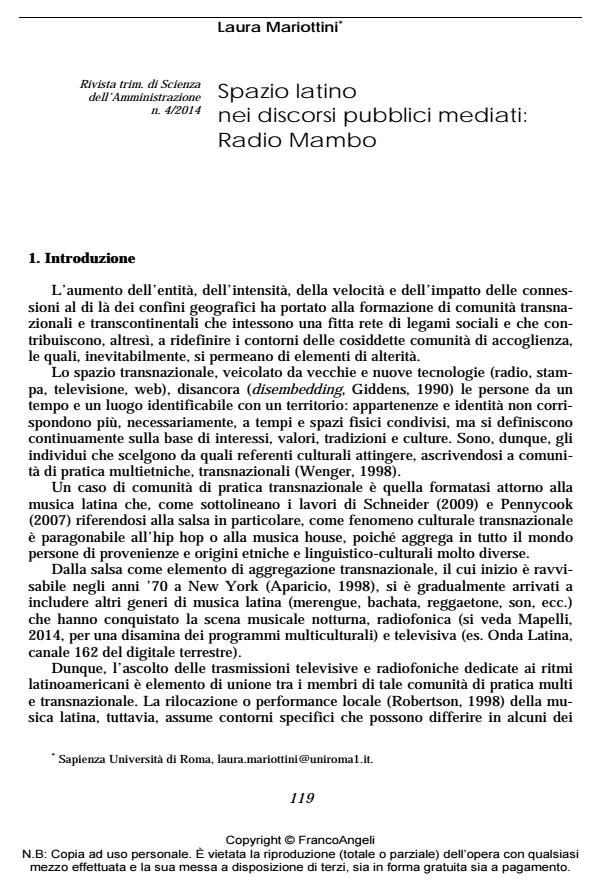Latin space in mediated public discourse: Radio Mambo
Journal title RIVISTA TRIMESTRALE DI SCIENZA DELL’AMMINISTRAZIONE
Author/s Laura Mariottini
Publishing Year 2015 Issue 2014/4
Language Italian Pages 13 P. 119-131 File size 78 KB
DOI 10.3280/SA2014-004010
DOI is like a bar code for intellectual property: to have more infomation
click here
Below, you can see the article first page
If you want to buy this article in PDF format, you can do it, following the instructions to buy download credits

FrancoAngeli is member of Publishers International Linking Association, Inc (PILA), a not-for-profit association which run the CrossRef service enabling links to and from online scholarly content.
In this paper I examine Latin space within the mediated public discourse to show how transnational communities of practice are created around elements typical of Latin culture (music, festival, concerts), but also around the use of Spanish language. I analyze a specific radio station, Radio Mambo, Italian, or rather roman, broadcasting both in fm and in streaming, speaking to an audience mainly Italian. I focus on the linguistic and the discursive aspects of one of the on air programs, Radio Cuba, where the Spanish language is used not as a means to connect the members of the diaspora or to respond to communication needs born of migration condition, but to tie laces and compose a new transnational identity.
Keywords: Transnationalism, code switching, radio
Laura Mariottini, Spazio latino nei discorsi pubblici mediati: Radio Mambo in "RIVISTA TRIMESTRALE DI SCIENZA DELL’AMMINISTRAZIONE" 4/2014, pp 119-131, DOI: 10.3280/SA2014-004010